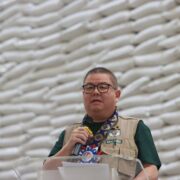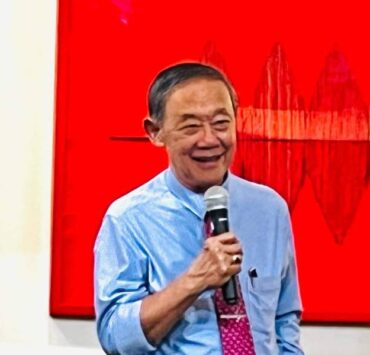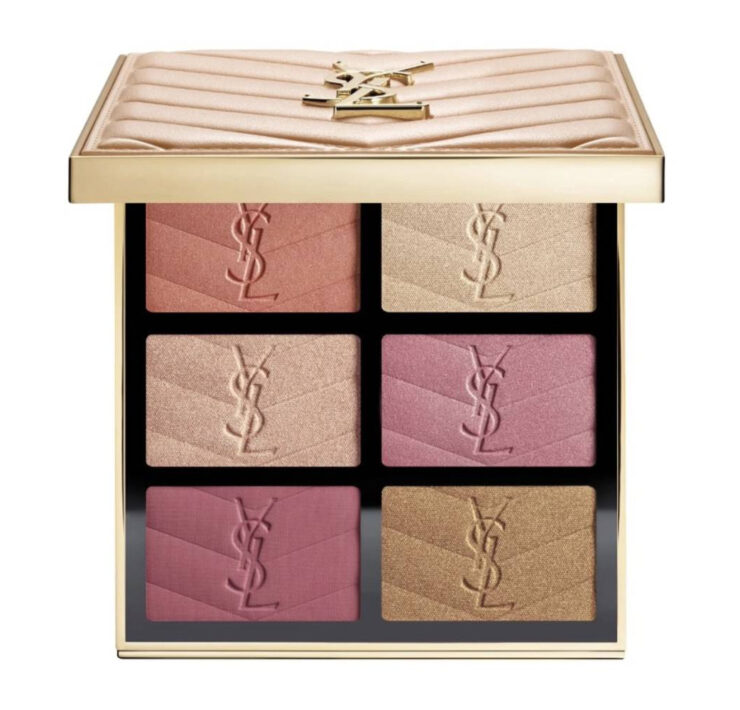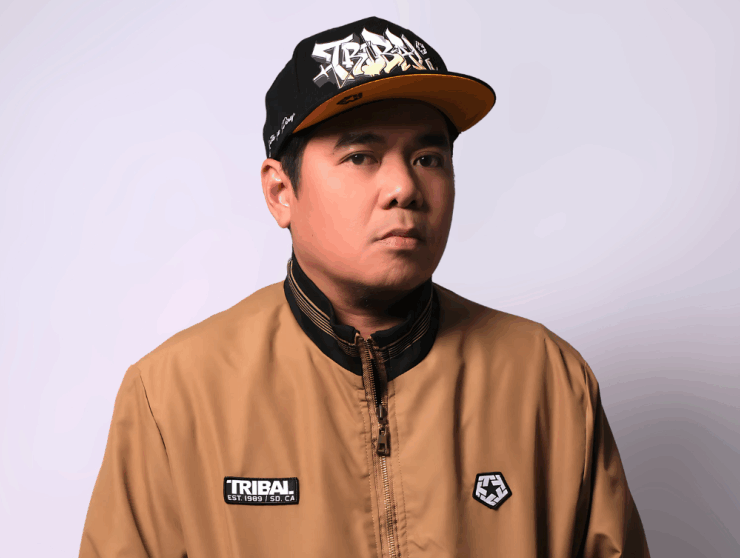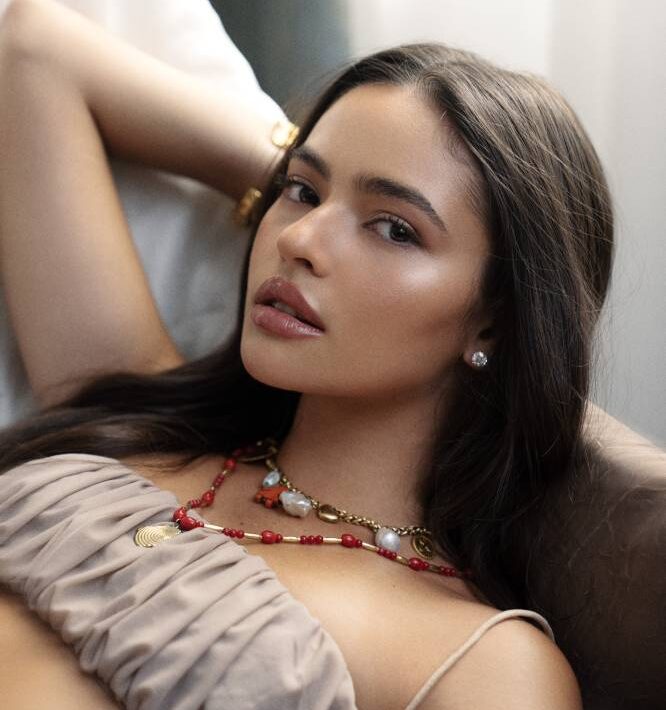Creative dialogue between fashion and art
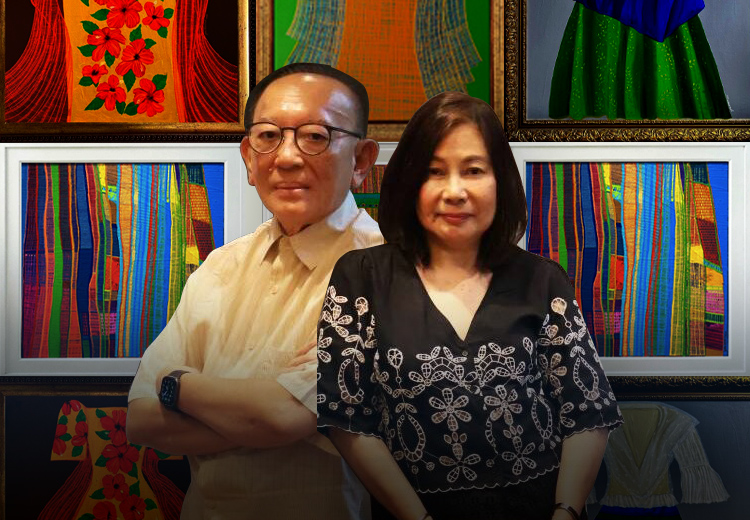
Fashionistas and art lovers are promised a lively and very creative dialogue between fashion design and the visual arts via “Bisti,” a fashion and art exhibit opening Nov. 14 at Cebu’s Nustar Resort and Casino. A collaboration between celebrated Cebu-based fashion designer Philip Rodriguez and painter Jane Ebarle, the exhibit aims to merge fashion and fine art by reimagining colonial-inspired Filipiniana attire for contemporary tastes.
Bisti is “garments” in the Visayan language. The title reflects the exhibit’s focus on clothing as a powerful expression of Filipino identity and cultural history, according to Rodriguez and Ebarle. By choosing a Visayan term, the exhibit underscores its roots in Cebu and celebrates the region’s contributions to Philippine heritage.
For “Bisti,” Rodriguez has designed several unique looks, featuring intricate prints and mixed fabrics like piña and organza, reflecting the textured aesthetic of Ebarle’s paintings of Filipiniana costumes. This layered approach emphasizes visual and tactile appeal, aligning with the artist’s signature style. Rodriguez said he initiated the partnership, drawn to Ebarle’s ability to create art that feels alive, almost leaping from the canvas.
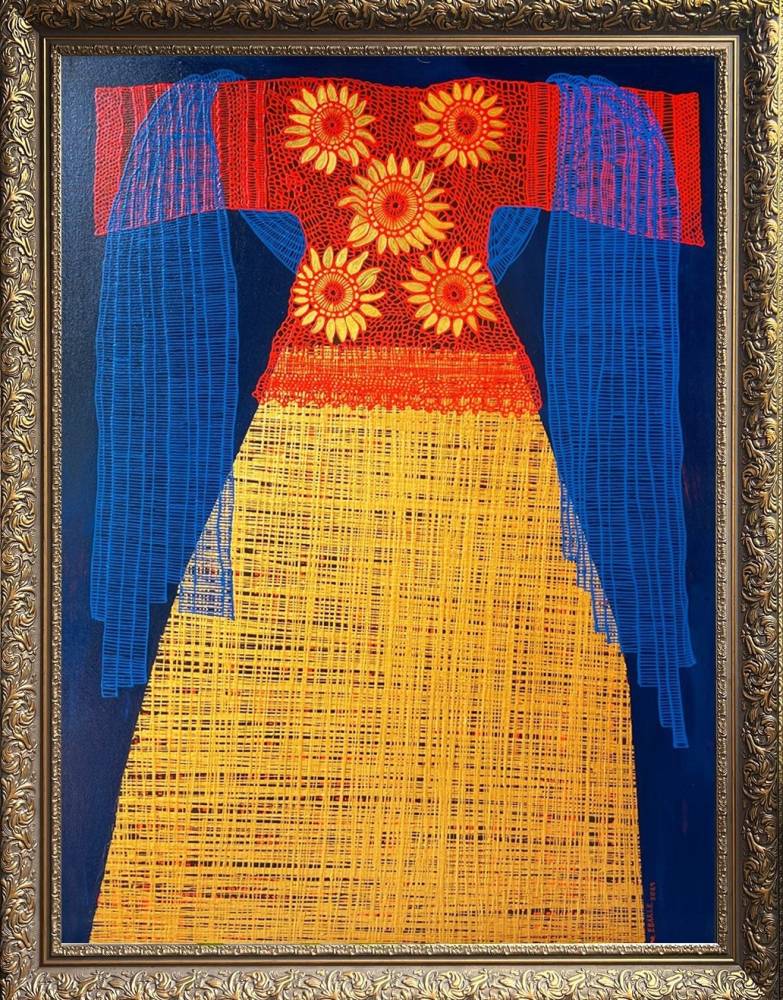
Homage to heritage
Rodriguez described his collection for “Bisti” as a 22-piece homage to Filipino heritage, inspired by Ebarle’s textured and vibrant artworks.
“Our Filipino collection marries traditional patterns and craftsmanship with modern sensibilities,” he explained, emphasizing that the designs include an array of baro’t saya, balintawak, maria clara dresses, kimona and terno. Many pieces are designed as separates, which allows for versatile styling with contemporary clothing, bridging historical influences with modern fashion preferences.
His designs also draw heavily from Cebu’s rich cultural milieu. As a port city, Cebu has long enjoyed a unique blend of local and foreign textiles. Rodriguez is rooted in this tradition, blending piña done in suksuk or embellished with callado with materials such as Thai silk, tropical linen, and Indian saris.
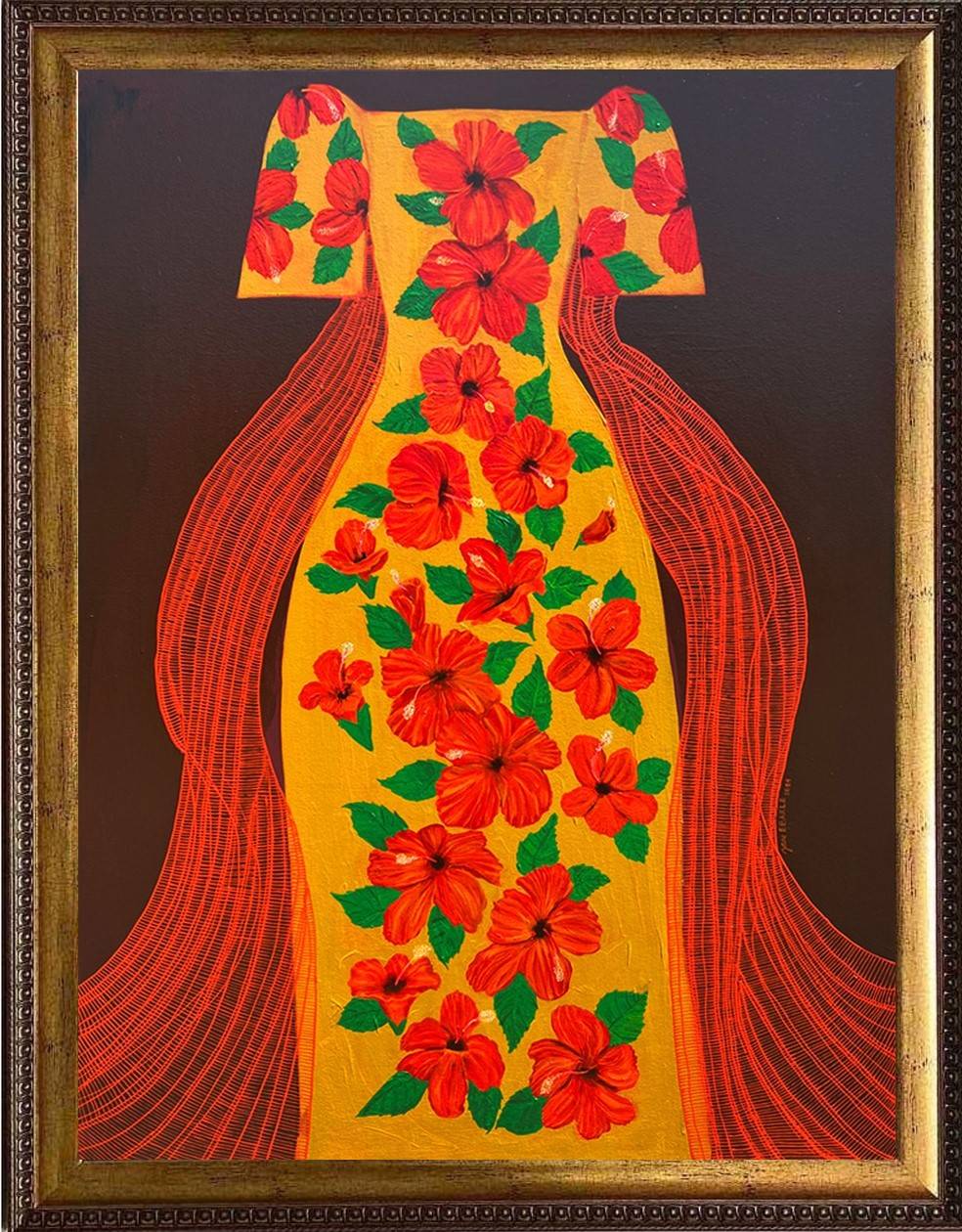
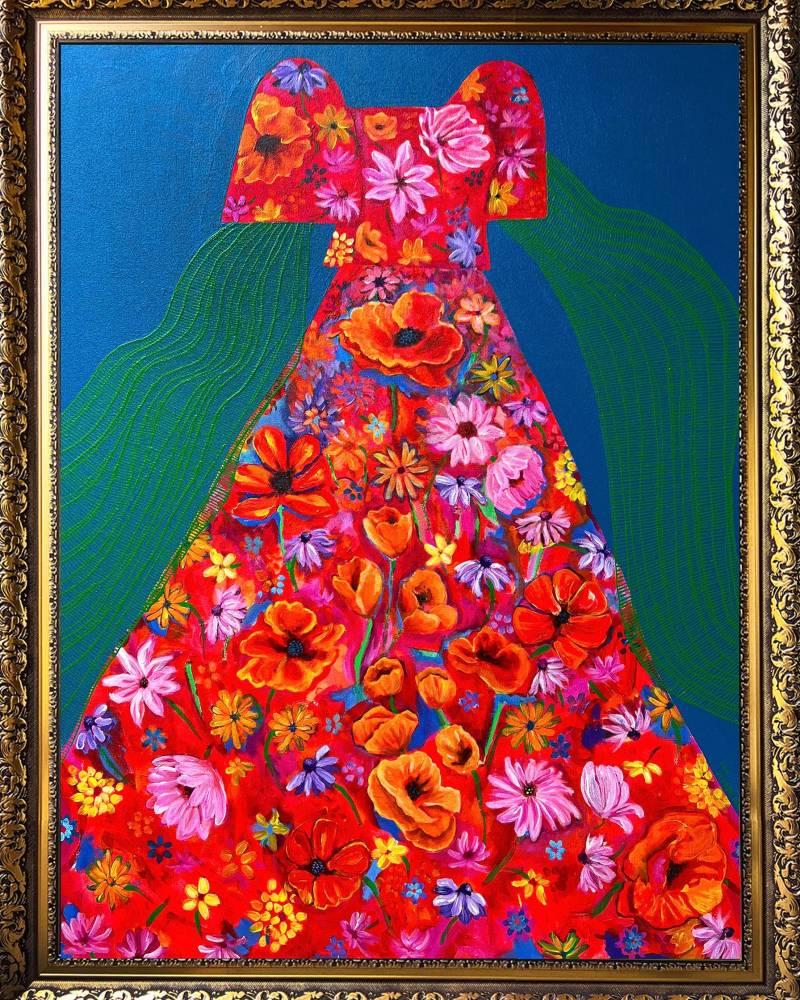
“We want to communicate to the new generation the beauty of our heritage,” he said, speaking passionately about how the exhibit aligns fashion and visual art to rekindle appreciation for traditional Filipino craftsmanship.
Beyond his collaborative work in “Bisti,” Rodriguez has made an indelible mark in Ternocon, the esteemed Filipiniana fashion showcase organized by Bench and the Cultural Center of the Philippines. He sees Ternocon as a movement to elevate Filipino wear beyond special occasions, embedding it in everyday style.
“The legacy of the Philippine dress is revitalized, making it sustainable for our everyday lives or OOTD (outfit of the day),” he explained. Through events like Ternocon and “Bisti,” Rodriguez hopes to inspire Filipinos to embrace their national attire, donning it in corporate and casual settings and fostering a renewed sense of national pride.
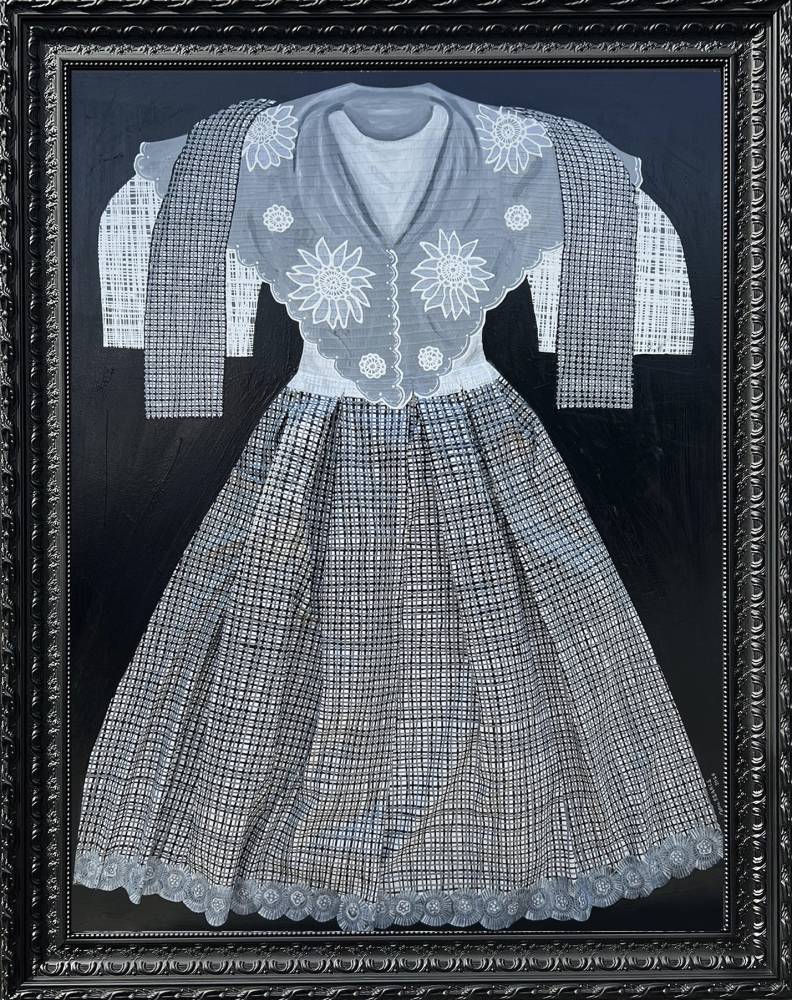
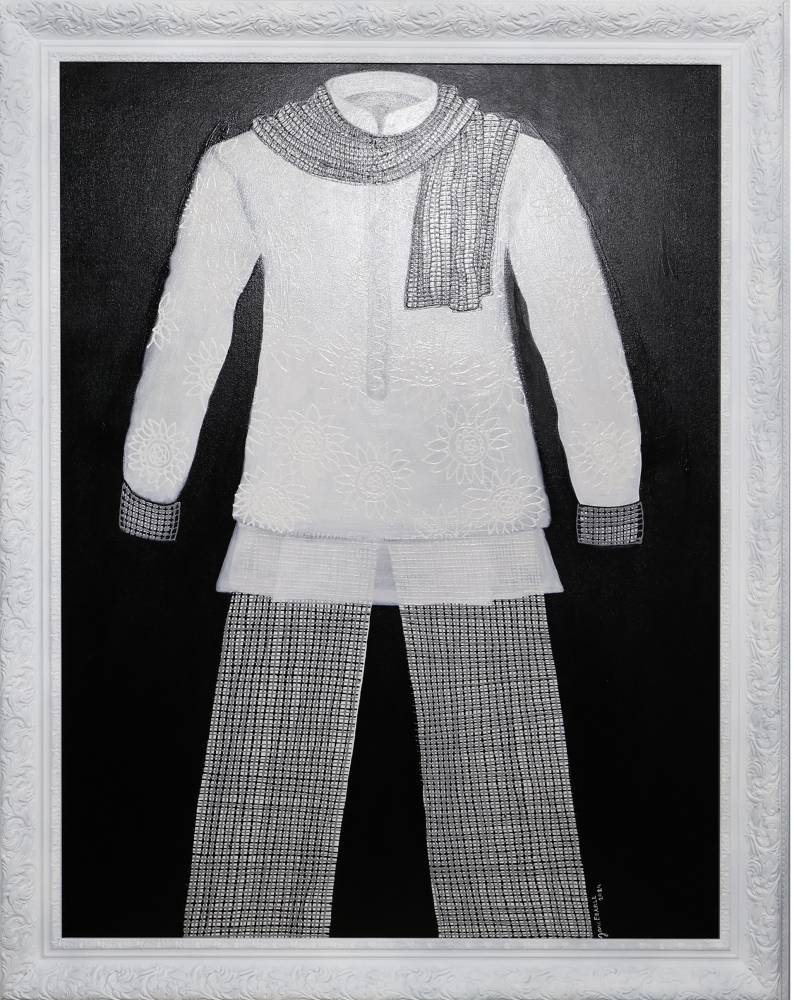
“Bisti” not only celebrates fashion but aims to instill a lasting appreciation for Filipino culture, heritage, and artistry. As Rodriguez put it, “We bring ‘Bisti’ to Cebu so our audience, from different generations, can appreciate Filipino culture, heritage, and legacy through fashion.”
To prepare for “Bisti,” Ebarle immersed herself in the world of Filipiniana fashion, even attending the Ternocon. Her 10 new artworks in the exhibit complement Rodriguez’s designs, with both independently exploring historical Filipino attire, particularly the clothing styles of Cebuanos during the late Spanish and early American periods.
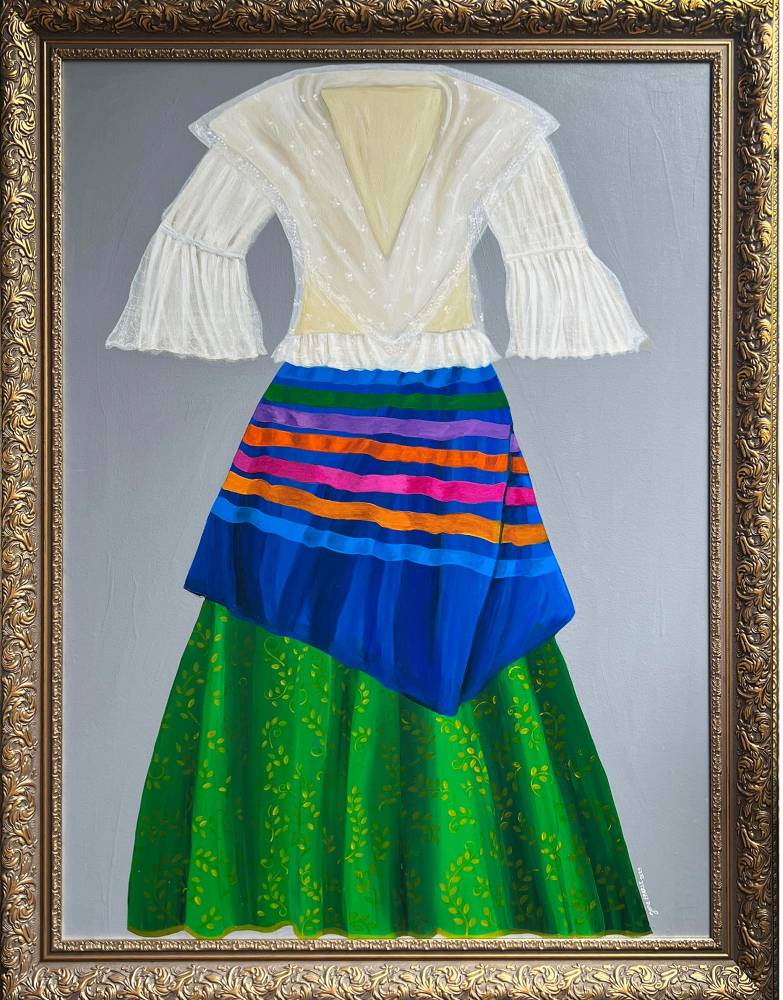
New phase
This collaboration marks Ebarle’s first foray with a fashion designer, signaling an ambitious new phase in her art career. While she did the “Kaganyakan” exhibit earlier this year with fashion designer Edgar San Diego, that show primarily showcased visual art, since San Diego himself had been focusing on painting lately. Ebarle explained that “Bisti” will serve as a milestone in expanding her reach beyond Metro Manila and connecting with Cebu’s art patrons.
Her journey into exploring art and heritage began with her interest in indigenous weaves and Filipino fashion. At the University of Santo Tomas, her mentors included Bonifacio Cristobal and Cenon Rivera, whom she credits with instilling the discipline and craftsmanship that would guide her work.
Yet it was Mario Parial, a modernist who encouraged students to break free from conventional structures, who helped Ebarle discover contemporary art’s expressive potential. “He paved the way for me to see what contemporary art is, and from then on, I saw different angles of art,” she said.
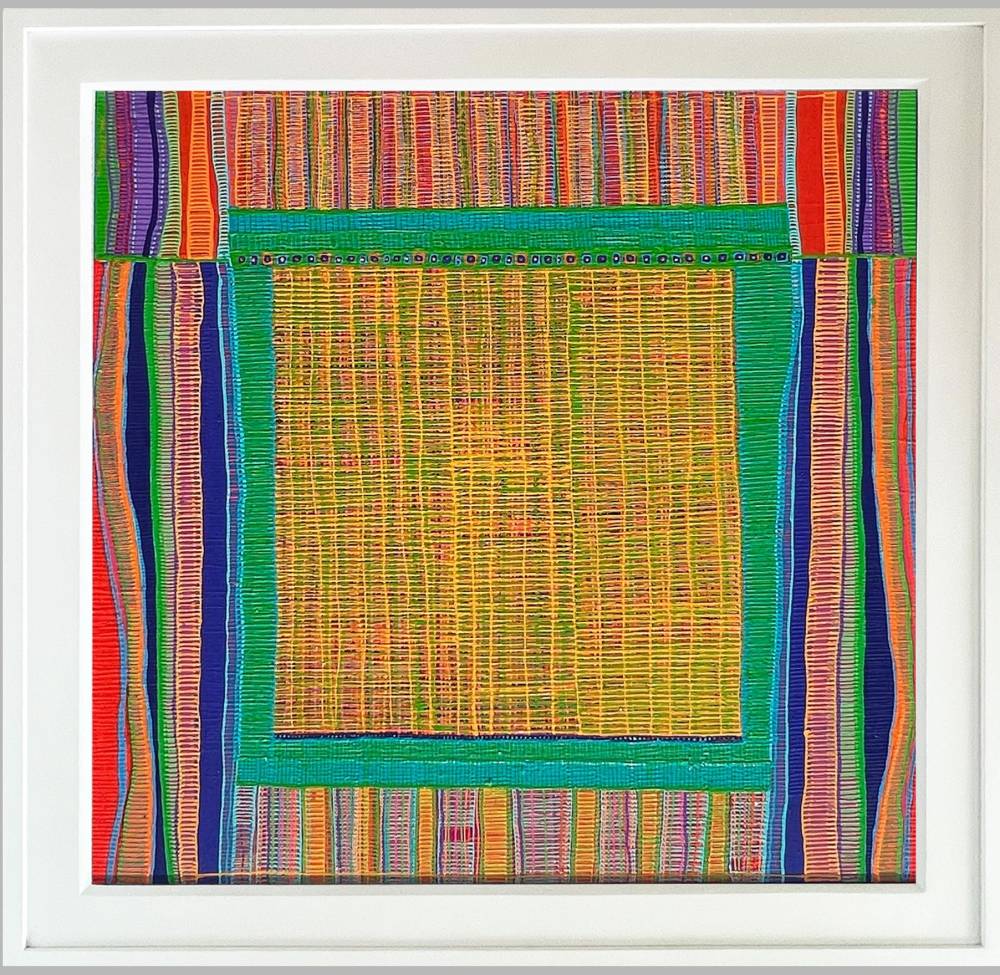
After a successful career in marketing an international art-materials brand, Ebarle returned to her “original love” of painting, channeling her focus into her acclaimed “Hibla” series. Inspired by the intricate patterns and vibrant colors of indigenous Filipino fabrics, she translated native weave designs into textured acrylic abstracts.
Her artistic vision evolved further when she transitioned from abstract representations of indigenous weaves to Filipino costumes, exemplified in her “Kawes” series (Pangasinense for “clothing”). In these works, she painted Filipiniana garments as ethereal forms without mannequins, allowing the costumes to appear as timeless, floating spirits. This choice honored local fabrics like piña and sinamay in a way that emphasized their elegance and craftsmanship.
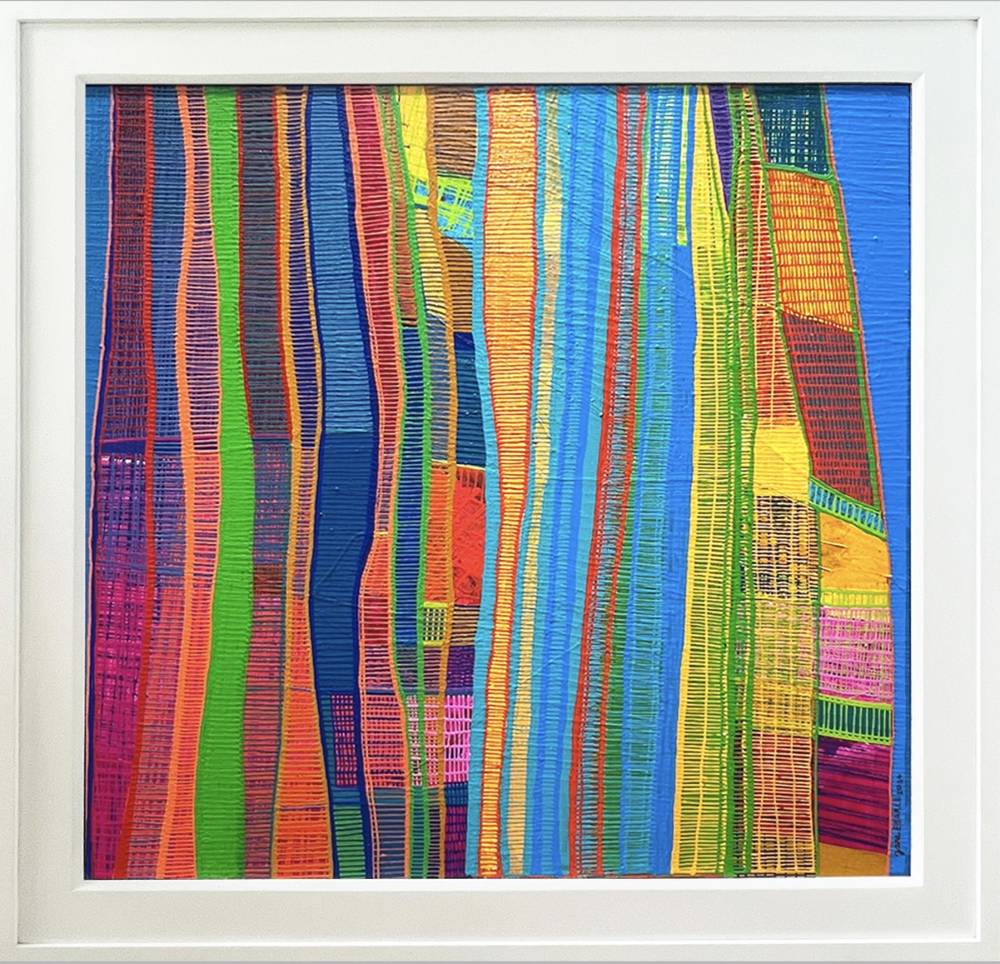
In “Bisti,” Ebarle collaborates with Rodriguez to blend her abstract and traditional influences with his expertise in modern Filipino attire. Together, they present a harmonious marriage of art forms, with each piece bearing her meticulous attention to detail and his innovative take on Filipiniana fashion. Their partnership was a natural fit for Ebarle, who spent time studying Rodriguez’s designs and immersing herself in traditional Filipino wear.
The exhibit will open with a video installation that transports viewers into an old Cebuano house, evoking Cebu’s heritage. Rodriguez’s personal ties to Cebu are celebrated through a live performance of “Langit ug Yuta,” a classic by his late uncle, the legendary Cebuano musician Emilio Villareal.
With its immersive concept, “Bisti” promises to honor Cebu’s creative energy while offering a fresh perspective on Filipino heritage in fashion and art, creating a vivid tribute to Philippine culture and artistry.











